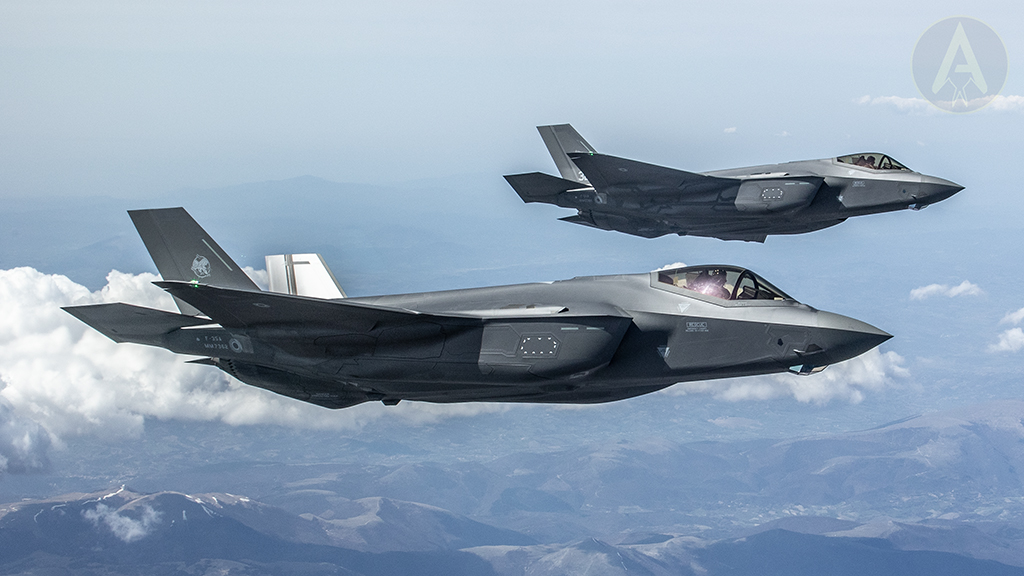Italy is restoring its long-range anti-submarine warfare (ASW) capabilities, a priority outlined in its new defense plan for 2024-2026. After retiring its last ASW platform in 2017, Italy is seeking to strengthen its military with new aircraft and additional F-35 fighter jets. The plan also includes upgrades for its navy and air force and major investments in unmanned systems, surveillance, and training.
New Anti-Submarine Warfare Aircraft
Italy has been without a fixed-wing ASW platform since 2017 when it retired its Breguet Atlantics. To fill this gap, the Italian navy and air force are launching a program to acquire two “maritime multi-mission aircraft” (M3A). These new aircraft will focus on countering underwater threats and also perform intelligence, surveillance, and reconnaissance (ISR) missions.
The defense ministry has requested €560 million ($622 million) for these acquisitions, but it has not disclosed which aircraft are under consideration. The Boeing P-8A Poseidon, already used by Germany, Norway, and the UK, is seen as a potential front-runner.
More F-35s for Italy
Italy is also investing heavily in expanding its F-35 fleet. The defense plan outlines a budget of €7 billion for purchasing five F-35B variants for the navy and 20 F-35A variants for the air force. The B variants will replace Italy’s aging Boeing AV-8Bs, while the A variants will strengthen the air force’s conventional take-off and landing capabilities.
Confusion surrounds the exact number of F-35s Italy intends to acquire in this phase. The document states that 15 F-35As will be purchased, but also mentions a total of 25 aircraft, which includes five B-model jets. Italy previously committed to acquiring 90 F-35s, though the target was originally set at 131 units.
The defense plan emphasizes that expanding the F-35 fleet will enhance Italy’s geopolitical position in Europe. It will also help maintain competitive production costs at Italy’s final assembly plant in Cameri, which produces F-35s alongside Lockheed Martin’s U.S. facilities.
Global Combat Air Programme
Italy remains committed to the Global Combat Air Programme (GCAP). The goal of this collaborative effort between the UK and Japan is to develop systems and a sixth generation combat aircraft. The plan allocates €1.4 billion until 2029 and another €7.5 billion through 2050 to ensure Italy’s role in this ambitious project.
According to the defense document, GCAP will not only secure Italy’s air combat superiority but will also play a major role in the country’s broader digital transition. The government sees this initiative benefiting multiple sectors beyond defense.
Expanding Fighter and Training Fleets
In addition to new F-35s, Italy will purchase 24 more Eurofighter Typhoon multirole fighters. These will replace its earliest Tranche 1 models and improve overall air combat capabilities.
To bolster pilot training and maintain Italy’s aerial display team, the Frecce Tricolori, the air force will acquire 20 Leonardo M-346 jets. Five of these will be used for training, while 15 will replace the team’s aging MB-339 fleet.
New Surveillance and Command Capabilities
Italy is investing in its surveillance and command and control capabilities. It plans to acquire additional Gulfstream G550-based aircraft for airborne early warning and battlefield management.
Additionally, the defense plan references the acquisition of the EC-37B, an electronic warfare aircraft developed by BAE Systems for the U.S. Air Force. However, details about the number of units or the timeline for delivery are not yet available.
Unmanned Systems and Helicopter Upgrades
The Italian military is also focusing on unmanned air vehicles (UAVs) and modernizing its existing fleets. The defense plan includes the purchase of two General Atomics MQ-9C Predator UAVs and a new ground control station. It will also upgrade its current Predator fleet.
The navy will upgrade its Leonardo Helicopters EH-101s and integrate the MBDA Marte ER anti-ship missile system onto both its EH-101s and NH90 helicopters. These upgrades will ensure that Italy’s navy remains well-equipped for future operations.
Future outlook
Italy’s new defense plan shows a clear commitment to restoring its anti-submarine capabilities, modernising its air force, and investing in new technologies. With significant funds allocated to acquiring new aircraft, upgrading helicopters, and maintaining its fighter jet fleet, Italy aims to strengthen its position in European and global security. The country’s involvement in the Global Combat Air Programme signals a long-term investment in maintaining air combat superiority while advancing digital innovations across multiple sectors.

